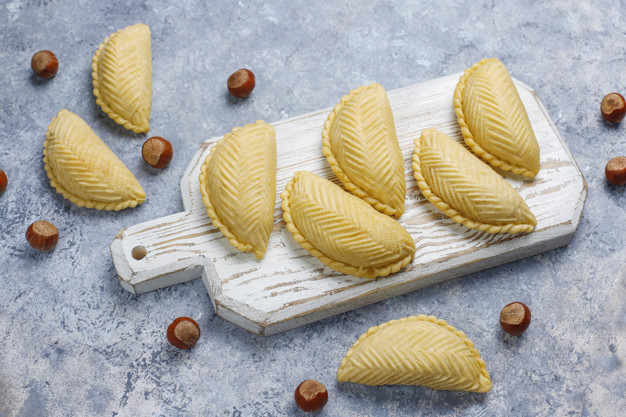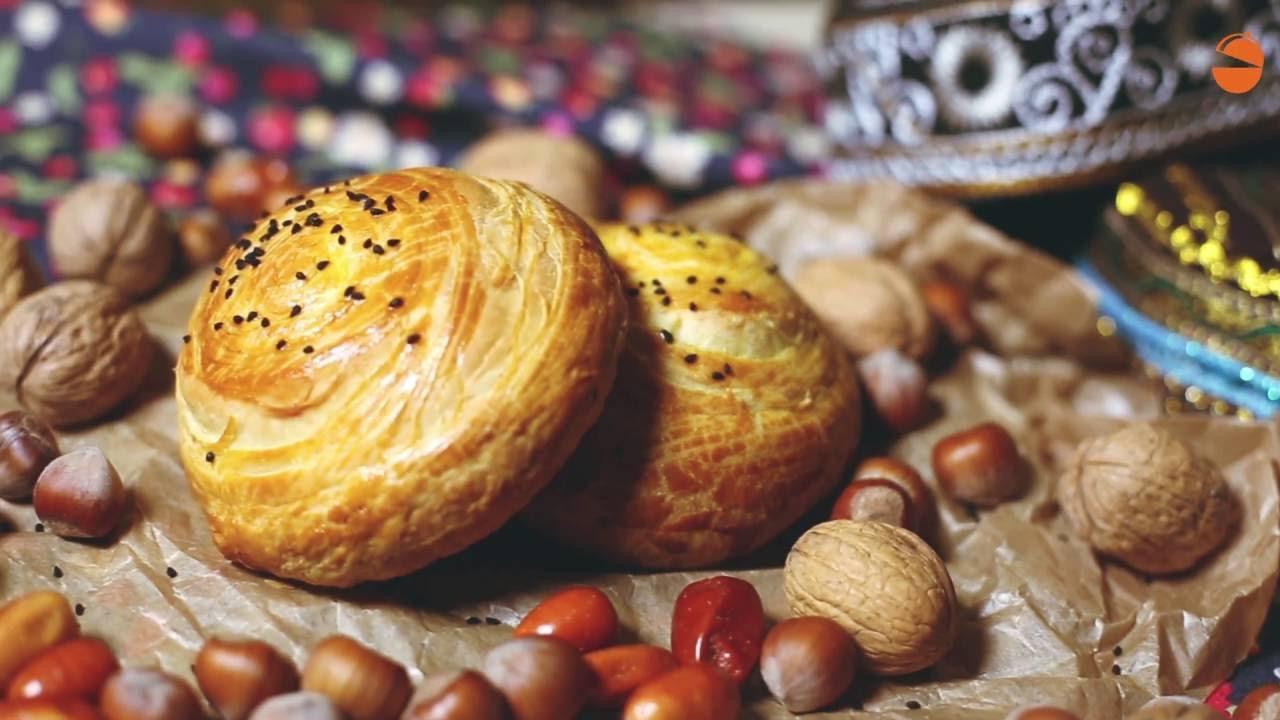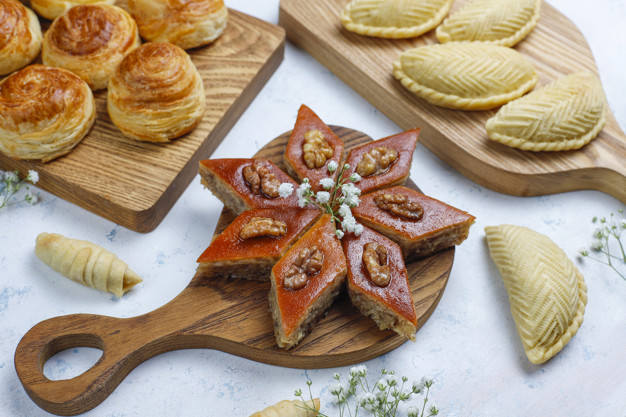Novruz, an ancient holiday meaning "new day", is celebrated by millions in the Caspian region on March 21, the date of the vernal equinox, with folk traditions and special foods.
On this occasion, women of the Caspian region are getting ready to celebrate Novruz by making pastries. Azerbaijan has its own classic pastries — pakhlava, shakarbura, and goghal — each symbolizing an aspect of nature and its awakening in spring. Pakhlava represents the four parts of the world, Goghal – the sun, Shakarbura – the moon.
Here are some facts about the three most popular Novruz pastries that you will find at any Novruz gathering.
PAKHLAVA
"Pakhlava", or "baklava", perhaps the most famous of the national sweets in Azerbaijan, a country with a big heart that stretched along the western shoreline of the Caspian Sea. There are dozens of recipes for preparing this national favorite as almost every region of Azerbaijan cooks this pastry in its own way.
The shiny, diamond-shaped pastries, each four-inch slice set off with a nutlet is the most common, classical Baku pakhlava. This kind of pakhlava is made of up to 10-12 layers of thin wheat dough filled with nuts, mixed with sugar and cardamom that is sweetened with syrup or honey. Each piece of pakhlava is decorated with a nut placed in the center of the diamond-shaped pastries.

SHAKARBURA
Another famous Azerbaijani pastry is shakarbura, which is a true discovery for any camper or hiker setting out on month-long voyages as this hearty pastry does not spoil over long periods and can help overcome even the sharpest feelings of hunger.
The name shakarbura comes from the Turkic word shakar borak, which means "a sweet patty". This pastry features a filling of sweet almonds or nuts, mixed with sugar and cardamom and wrapped in dough. The dough is then pinched shut with an intricate design, and the outside is decorated with special tweezers called maggash.
Classical shakarbura is made in the shape of a crescent, which is no coincidence since the pastry is popular during the lunar waxing and waning as a new moon – and a new month – emerges.

GOGHAL
Classic goghal is a pastry made of puff dough with various fillings - a special blend of salt and pounded seeds of fennel, cumin, and turmeric, or sugar — depending on whether it is shor (salty) or shirin (sweet) goghal.
Though they’re more savory than sweet, shor-goghal are usually eaten with a cup of sweetened tea. The dough for these small round-shaped buns, which symbolize the sun, is thin and flaky, and is often made with 9-12 layers, though common wisdom says that the more layers there are, the more flaky and tasty the bread will be. The top of the goghal is usually sprinkled with sesame seeds.








 The Mine Action Agency of Azerbaijan (ANAMA) reported on Thursday the discovery of a significant amount of explosives in the Khojavand district of ...
The Mine Action Agency of Azerbaijan (ANAMA) reported on Thursday the discovery of a significant amount of explosives in the Khojavand district of ...
 Iran’s Foreign Minister, Hossein Amir-Abdollahian, has labeled a foiled Israeli drone attack in certain parts of the country as a "failure" for Isr...
Iran’s Foreign Minister, Hossein Amir-Abdollahian, has labeled a foiled Israeli drone attack in certain parts of the country as a "failure" for Isr...
 Iran has refuted reports of alleged damage to Shimon Peres Negev Nuclear Research Centre located southeast of Dimona, Israel, during the recent air...
Iran has refuted reports of alleged damage to Shimon Peres Negev Nuclear Research Centre located southeast of Dimona, Israel, during the recent air...



